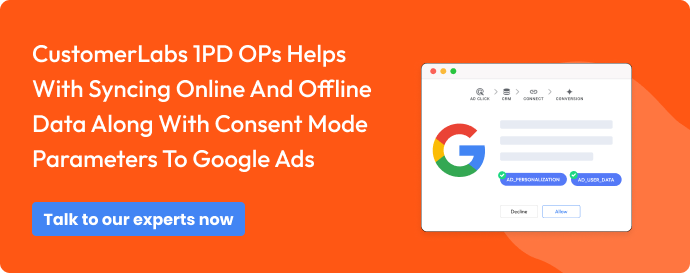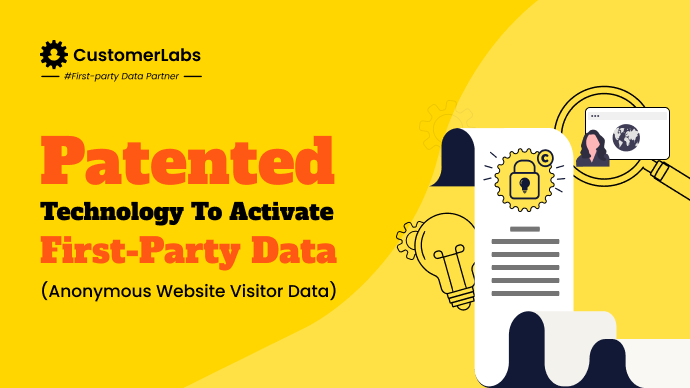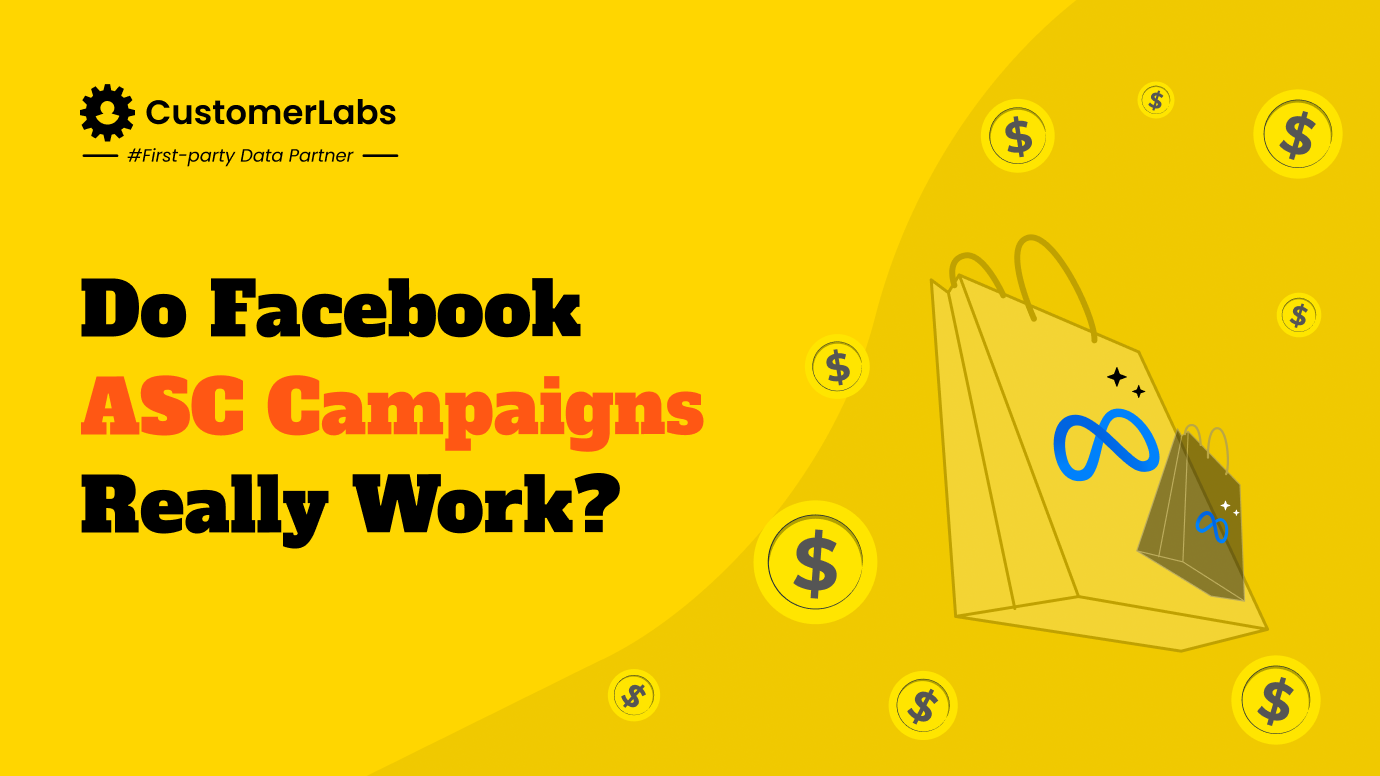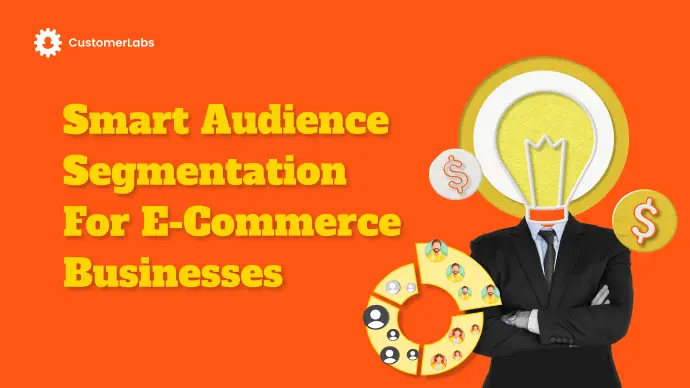Increasing conversion rates on ad platforms has been a mystery for marketers. If you are one among those marketers who wants to crack the secret to increase conversion rates, read on….
Let’s find out how to increase the conversion rate and why it even matters.
In short, here’s what you’ll be reading in this blog:
Strategies to increase conversion rates across Meta Ads, Google Ads, and email marketing campaigns; And the tools required to make it happen seamlessly without much effort.
How to Increase Conversion Rate
Four things play a crucial role in increasing conversion rates (especially when it comes to ads), and they are:
- Targeting the right audience
- Resonating messages to the ICP (ideal customer profile)
- Attractive Creative
- Robust conversion tracking
Resonating messages and having attractive creatives, I leave it to you because folks out there already speak about it a lot.
My focus will be on my forte i.e., “how to target the right audience and incorporate robust conversion tracking to increase the conversion rate”.
Targeting the right audience with the relevant message and creatives will persuade the customers to take the desired action that results in a conversion.
When you effectively track this conversion and sync it back to the ad platform, you will see that the conversion is attributed directly to the ad campaign that resulted in the conversion.
Therefore, robust conversion tracking will help you see an uplift in the overall conversions and conversion rate.
So, now you have taken care of 3 things out of the four.
But how do you tackle the last one – targeting the right audience?
First-party data is the key!
The ad algorithms are complex, data-driven machine learning algorithms that learn from data.
When you feed the ad algorithm high-quality 1PD (first-party data), you share the right audience signals with ad platforms. These high-quality audience signals help the ad algorithm expand its audience net in the right direction. And will result in finding people who are most likely to convert.
You already fixed the messaging for your ICP, and the ad algorithm shows this message to the right person based on the first-party data.
Ta-da!
You will have an increased conversion rate because the percentage of people who view the ad and result in a conversion will be higher as you reach out to the right audience with the right message.
Note: Without first-party data, the ad algorithm will expand in all directions to find the relevant audience. This will waste the ad spend as it reaches out to irrelevant people. But when you share first-party data, it will pick up the right ones and show them your ad.
Understanding how the ad algorithms improve conversion rate
The ad algorithms spend your ad budget based on the number of people it reaches for your ad campaign (or the impressions). Now, if you do not have any data, it is like you do not have any control over whom it is reaching out to show the ads. It goes as broad as possible.
For example, if it has reached out to 100 people by spending $100 and resulted in only one conversion – your conversion rate is 1%, and the cost per conversion is $100.
Now, when you train the ad algorithm with the first-party data, it reaches out to relevant audiences, and it reaches out to the same number of 100 people (but the more relevant ones) by spending $100. But, there would be more conversions – let’s say 10. So, your conversion rate is 10%, and the cost per conversion is $10!
So when you increase your conversion rate, you also reduce your cost per conversion and will optimize your ad spend.
Enough of this pep talk and ‘gyan’ on the need to increase conversion rate and what matters in increasing conversion rate.
Let us dive into some real strategies that help you increase your conversion rate.
Strategies that help you increase your conversion rate
- Retargeting the right people
- Smart audience segmentation
- Cross-selling strategy
- Targeting the unsubscribed or purchased long back
Retargeting the right people
Retargeting is one of the proven strategies that work to increase your conversion rates. Just imagine this – for a person who viewed that blue tie multiple times but did not purchase it, you show an ad with the same blue tie, with other color options!
You can also show a discount sale on ties (works if the user did not purchase because of price as a reason).
The chances of the retargeted users purchasing the product are much higher compared to the general targeting as the user is already familiar with your brand and products. Therefore, retargeting the right people will increase your conversion rate.
Segmenting first-party data for targeted advertising
To increase personalization (targeting the right person with the right message at the right time), you need to segment your 1P audience data (first-party data) and run ad campaigns.
For example, you can segment people who added a specific product (say red shirt) to their cart in the last 45 days but did not purchase. For this audience segment, run a personalized ad with the message “Perfect Red Shirt that looks fabulous on you is waiting in your cart. Buy Now!”
If you have your users’ known information like date of birth, marriage anniversary, or something else, segmenting them based on these dates and personalizing ads would be more promising for marketers.
Otherwise, you can also run seasonal campaigns with the same audience segments using a different message – “Christmas is coming. The red shirt in your cart is perfect for celebration”
These kinds of personalized messages targeting the right people have a higher conversion rate.
Therefore, segment your 1PD for precision in ad targeting.
Cross sell strategies
Cross-selling is one of the best strategies to increase your conversion rates. For example, if a customer buys blue jeans, you can retarget them with a white shirt that goes as a good combo with the blue jeans.
As you are helping the user with a good combination for them showing how good the white shirt looks with the blue jeans they purchased, it will persuade them to purchase the white shirt as well. This increased personalization with cross-selling strategies will result in higher conversion rates.
Retargeting a Lost customer/customer who purchased over a long time
You can segment all those customers who previously purchased with you a long time ago and run an ad with a comeback message saying, “Hey we missed you……. “
This retargeting approach will improve your conversion rate as the people who see this ad are already familiar with your brand, and if they find the value in your message, they will be happy to get back to you.
💡Tip: Remember – When retargeting a lost customer or a customer who made a purchase long ago, ensure to offer the value they wish they had back then. Show them they would get what they wanted with your brand.
How to Increase Conversion Rates on Meta Ads
Meta Ads have been a playing field for marketers, especially eCommerce marketers, to generate revenue easily. The recent advantage shopping campaigns have made it easier to set up the campaign with almost no major campaign settings to think about. Marketers who leveraged ASC campaigns by following the best practices have boosted their conversion rates by 4X!
Below are the strategies that help increase conversion rates on Meta Ads not just for eCommerce but also lead generation marketers.
Set up Meta Conversions API
As discussed, first-party data is crucial to improve conversion rates and Meta’s Conversions API (CAPI) helps marketers send 1PD to Meta directly on the server side. It helps marketers mitigate signal loss and send high-quality 1PD to maximize ad campaign performance.
One of the best practices to follow along with setting up Meta Conversions API is setting up Meta pixel along with advanced matching for the web (manual and automatic).
Note: Starting May 2025 Offline Conversions API is being deprecated by Meta Ads. Migrate to Conversions API for sending offline event data as well.

Lookalike audience of first party data
For top funnel prospecting campaigns, use high-quality first-party audience data as the seed audience to find the lookalike audience. These lookalike audiences Meta found using your customer data, will be very similar to people who are highly interested in your products/business and therefore will increase your conversion rate as compared to your other top-funnel campaigns.
Note: If you want to increase the value of your conversions, along with your conversion rate, you may also choose to explore the value-based lookalike audience.
Lookalike of high value audience
Meta Ads allows you to sync value-based audiences to create value-based lookalike audiences. This is an interesting feature that most marketers overlook.
By creating value-based lookalike audiences with the seed audience (1PD) having value attached to the users, you can acquire an audience that drives more value, thereby increasing your conversion value, rather than focussing solely on conversions.
This approach of using value-based lookalike audiences for targeting in your Meta ad campaigns will help you increase both conversions and conversion value. This is because you are targeting the high-value audience, who are most likely to convert.

Avoid Ad fatigue & increased frequency
Ad fatigue and ad frequency are two things that are inversely proportional to conversion rates. The higher the ad fatigue and ad frequency, the lower the conversion rates. Therefore, figure out a way (probably, using first-party data, with more and more ad creative variations), to reduce the ad frequency and fatigue.
Advanced Strategy in Meta Ads
Strategy 1: Lifetime customer value
Sync your customer data along with their conversion value, or the predicted LTV (predicted using advanced machine learning algorithms and AI), with Meta Ads. This helps you target the high-value audience, and therefore, will increase the conversion value.
You can use the maximize conversion value bid strategy using this high-value first-party data to see better results. This advanced strategy will also optimize the ad spend, resulting in higher conversion value for the same ad spend.
Strategy 2: Go beyond standard purchase event optimization
Instead of the standard purchase event, go for custom event optimization. For instance, sync high AOV purchase data to Meta Ads to optimize your ad campaigns for getting more high AOV purchases.
If you have multiple categories of products, you can optimize your ad campaign for that particular product by sending the custom event as that specific product category purchase event. This helps you optimize the ad campaign for specific product rather than for purchase as a whole.

How to Increase Conversion Rates on Google Ads
The launch of Performance Max campaigns has proven that Google Ads is also moving towards automation and the era of AI by upgrading its ad algorithms.
Google is going very broad with PMax, and it becomes difficult for marketers to increase conversion rates as you do not know who the campaign targets. Here are a few ways to improve conversion rate in Google Ads including PMax campaigns.
Set up Conversion Tracking in Google Ads to improve conversion rate
Conversion tracking in Google Ads is a mess! If you can get your mess right, you will be able to track and send the data accurately to Google Ads, informing which clicks resulted in conversion. The number of conversions spikes up and so does the conversion rate if you set up conversion tracking accurately and send the data without any loss, in almost real-time.
Conversion tracking not only helps with attributing the conversions accurately but goes a step further and trains Google’s algorithms with high-quality audience signals, optimizing the Google Ads campaigns in the right direction and achieving the results you desire.
Note: If your users are from the EEA (as of 2024, May), remember to send Google consent mode v2 parameters ad_user_data;and ad_personalization along with customer data to get those consented conversions attributed correctly, and also improve the modeling of unconsented conversions. This will result in a better conversion rate in Google Ads.
For Shopify users, please re-check your consent settings to ensure there is no data loss after the latest consent update from Shopify!
Offline conversion tracking in Google Ads to improve conversion rate
Most marketers overlook offline conversions when both online and offline conversions happen. They miss out on sending this data back to Google Ads. This lack of offline conversion data causes a dip in overall conversions resulting in lower conversion rates.
Therefore, it is crucial to feed Google Ads with all online and offline conversion data along with consent parameters (as per Google consent mode v2 for offline conversions).
Once Google Ads attributes your offline conversions, you realize the uplift in conversion rate inside your Google Ads campaigns.
Therefore, whenever conversions happen offline, ensure to sync them up with Google Ads to increase conversion rate, and give Google Ads a complete picture of your customer journey.

RLSA & Dynamic Remarketing Ads
Retargeting has always proven to be successful in increasing conversion rates. Google Ads offers RLSA (remarketing list search ads) and dynamic remarketing ads to leverage retargeting and increase conversion rates.
Use different audience segments, and craft personalized messaging to run retargeting ad campaigns to see improved conversion rates.
Here’s how you can run your RLSA campaigns:
Choose the specific blog readers list or page visitors and run an ad relevant to that content.
For example, I have created a list of audiences who read our Facebook Conversions API blog and retargeted them using search ads with the keywords related to that content, such as
- increase Facebook EMQ score,
- increase custom audience match rate,
- improve Facebook ad campaign performance,
- improve Meta ASC campaigns performance, etc.
The ad copies were similar to:
- Boost your EMQ score on Meta with an easy Conversions API setup!
- Increase custom audience match rate for anonymous users in Meta Ads using CustomerLabs
- Maximize your ad campaign performance with Meta’s Conversions API easy setup
- Conversions API can boost your ASC campaign performance. Get started with a seamless CAPI setup today!
Such personalized retargeting with RLSA has given us a higher conversion rate as the ads are much more relevant to the target audience.
If you are an eCommerce marketer and looking to leverage retargeting, cross-selling is something that would work for sure. For example, if you are running an eCommerce store that sells men’s clothing,
- For all those users who purchased blue jeans alone, you can retarget them with an ad creative that says – “How do you think this white shirt goes with the fabulous blue jeans that you purchased with us”
These kinds of cross-selling strategies can be leveraged using retargeting and increase the conversion rate.
Value-based bidding to optimize your ad spend
Value-based bidding is an interesting concept that Google Ads has introduced that helps you bid the right amount based on the value that particular user is to bring to the business. When leveraging value-based bidding, it is not just bidding for the right value but also targeting the right user, helping you increase the conversion rate.
To know more about value-based bidding, read our blog.
Demand Gen Campaigns for lookalike audience
Google’s new demand gen campaigns offer an interesting feature to help marketers leverage the feature of lookalike audiences in Google Ads. You can choose either 2.5% lookalike, 5% lookalike, or 10% lookalike. No other campaign in Google Ads offers the lookalike audience feature.

Demand Gen campaigns help you increase conversion rate by leveraging the lookalike audience segment, similar to how lookalike audiences in Meta Ads help increase conversion rate.
Performance Max Campaigns with with first-party data
Performance Max campaigns are AI-driven campaigns that go as broad as possible and find the audiences across Google’s different platforms (such as Gmail, Discover, Search, YouTube, etc.).
When the algorithm goes broad, it becomes difficult to know who the algorithm is targeting. However, Google’s recommendation to feed 1P data to PMax, makes it clear that the audience net is expanded based on the first-party data you send to Google Ads.
First-party data acts as the driving force behind the Performance Max campaign’s audience targeting. The better the audience signals in the data, the better the audience net expansion.
As we were discussing throughout this blog, when the right user is targeted, you will see an increase in conversion rate.
Thus, Performance Max campaigns help you increase your conversion rate if you feed the algorithm with high-quality 1P data.
How to Increase Conversion Rates on Email Campaigns using first-party data
Personalized and targeted messages
When you segment your first-party customer data, and send the emails with relevant subject lines, and relevant content inside the emails, the probability of the user opening the email and purchasing will be higher.
Imagine this – You add a product to the cart but abandon the cart. Now, you get an email with a subject line having the product(s) you abandoned with some offer, and the content of the email mentioning why you must consider purchasing that product, along with the details of the product.
The probability of you purchasing the product would be much higher with this email rather than a generic email that says cart abandoned, please buy them.
Trigger opportunity emails
Triggering opportunity emails is a crucial aspect that works wonders in increasing the conversion rate. Whenever you make changes to your product catalog, roll out automatic emails to the users in a personalized way.
For example, a user has viewed the product 3 times but did not purchase it in the last 30 days. Now, if you have made any changes to the price – let’s say you reduced the price of that product by 20%. This change must trigger an email to that user who viewed the product 3 times but did not purchase the product, informing the reduction in prices.
This is one of the proven strategies that work in increasing the conversion rate.
Let Go When Needed
When a user does not open your emails for a significant period of time, understand that email is not the right platform to reach those users. Exclude them from your email list. This way, you do not lose the brand reputation.
Now combine the exclusion list and the email unsubscribers list, and try reaching out to them on Ad platforms like Google and Meta Ads with the strategies discussed above.
Because it is an assumption that it is right to target them on the ad platform rather than on email. Additionally, as the users are already familiar with the brand, the probability of them converting is higher.
By letting the users go off your email list and targeting them on ad platforms you can increase your conversion rates.
TL; DR
Here’s a quick checklist to see how you can increase your conversion rate on Meta & Google Ads
- Setting up robust conversion tracking.
- Utilizing first-party data.
- Retargeting with custom audience segmentation and personalized messaging.
- Cross-selling strategies.
- Setting up offline conversion tracking.
- Using Conversions API, enhanced conversion tracking, etc., to send the data without signal loss to ad platforms.
- Leveraging lookalike and value-based lookalike audiences.
- Avoid ad fatigue by controlling the ad frequency.
Conversion rate is a crucial metric to understand if you are targeting the right ICP, and if your message is resonating with your ICP. First-party data is the data you collect directly from your customers, and therefore helps you target the right ICP (people similar to your customers).
To know more about how 1PD OPs helps your business as a whole, talk to our 1PD OPs expert!
P.S. If you are exploring LinkedIn Ads, then setting up LinkedIn Conversions API will be a good start for maximizing your ad campaign performance on LinkedIn Ads.





